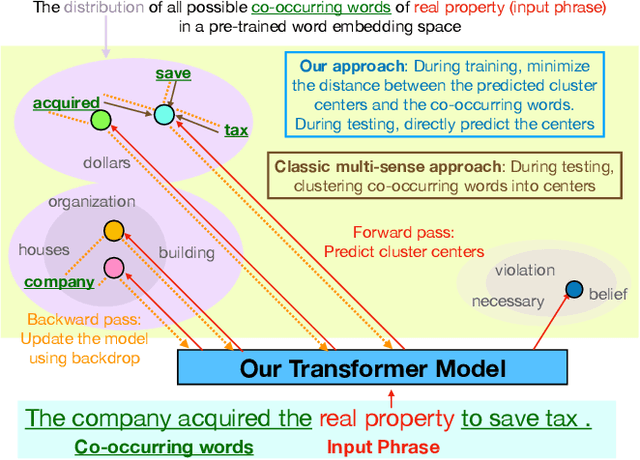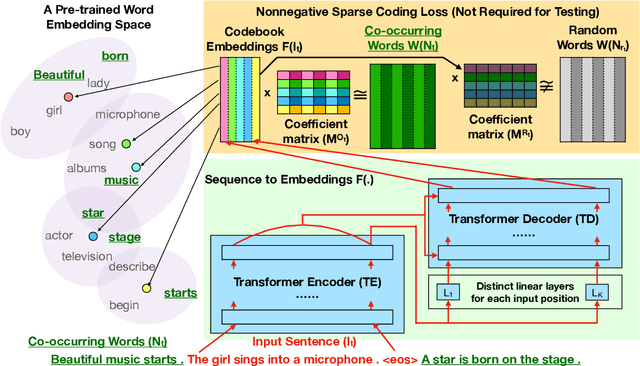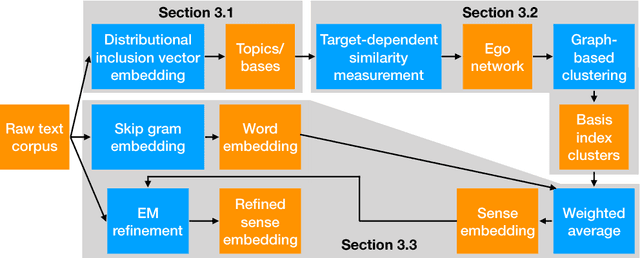Amol Agrawal
Extending Multi-Sense Word Embedding to Phrases and Sentences for Unsupervised Semantic Applications
Mar 29, 2021



Abstract:Most unsupervised NLP models represent each word with a single point or single region in semantic space, while the existing multi-sense word embeddings cannot represent longer word sequences like phrases or sentences. We propose a novel embedding method for a text sequence (a phrase or a sentence) where each sequence is represented by a distinct set of multi-mode codebook embeddings to capture different semantic facets of its meaning. The codebook embeddings can be viewed as the cluster centers which summarize the distribution of possibly co-occurring words in a pre-trained word embedding space. We introduce an end-to-end trainable neural model that directly predicts the set of cluster centers from the input text sequence during test time. Our experiments show that the per-sentence codebook embeddings significantly improve the performances in unsupervised sentence similarity and extractive summarization benchmarks. In phrase similarity experiments, we discover that the multi-facet embeddings provide an interpretable semantic representation but do not outperform the single-facet baseline.
Efficient Graph-based Word Sense Induction by Distributional Inclusion Vector Embeddings
May 29, 2018



Abstract:Word sense induction (WSI), which addresses polysemy by unsupervised discovery of multiple word senses, resolves ambiguities for downstream NLP tasks and also makes word representations more interpretable. This paper proposes an accurate and efficient graph-based method for WSI that builds a global non-negative vector embedding basis (which are interpretable like topics) and clusters the basis indexes in the ego network of each polysemous word. By adopting distributional inclusion vector embeddings as our basis formation model, we avoid the expensive step of nearest neighbor search that plagues other graph-based methods without sacrificing the quality of sense clusters. Experiments on three datasets show that our proposed method produces similar or better sense clusters and embeddings compared with previous state-of-the-art methods while being significantly more efficient.
 Add to Chrome
Add to Chrome Add to Firefox
Add to Firefox Add to Edge
Add to Edge